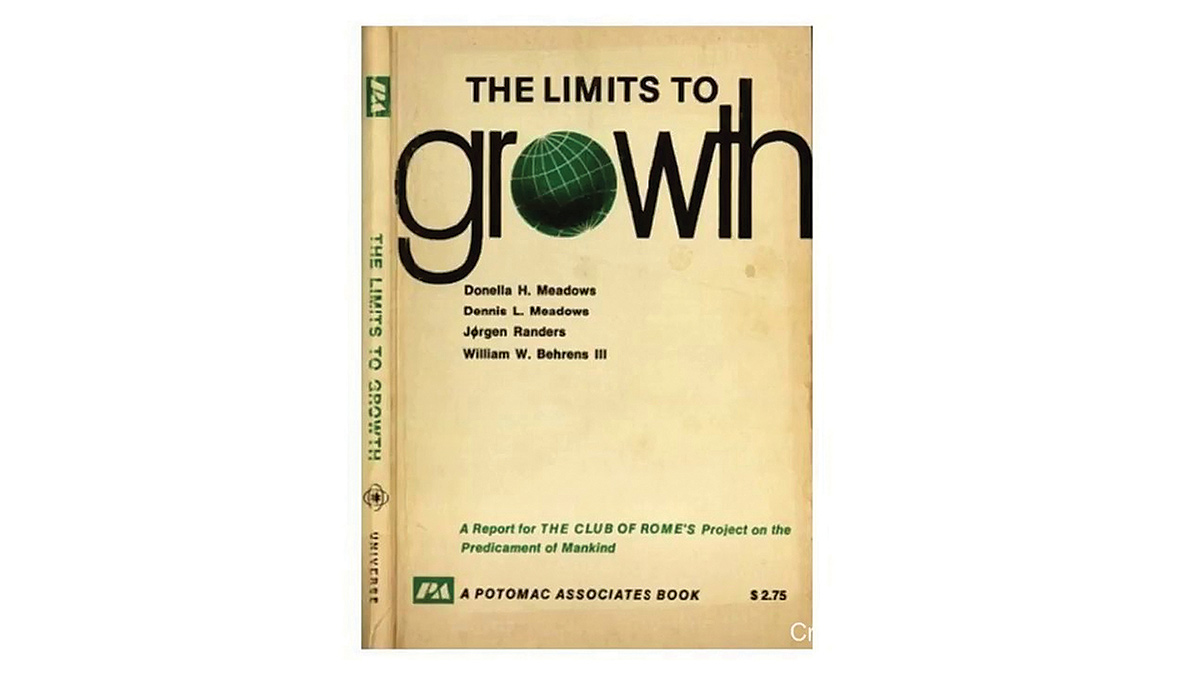
Nearly fifty years ago, in 1972, an obscure think-tank oddly named the Club of Rome commissioned a group of researchers from the Massachusetts Institute of Technology (MIT) to furnish answers to a rather fundamental question: is infinite growth possible on a finite planet? The team came up with a report titled “The Limits to Growth”. Very few economic studies have been as timelessly startling, enduringly divisive, or meticulously critiqued. Even fewer have racked up 30 million copies in sales and fewer still command a $900 retail tag for the original imprint. With the aid of pioneering computer simulations, the researchers studied five basic variables: population, food production, industrialisation, pollution and the consumption of non-renewable natural resources. Assuming that all variables would continue to grow exponentially while the ability of technology to increase resources would grow only linearly, the researchers drew three primary conclusions: in a business-as-usual scenario where population, industrialisation, pollution and food production grew at prevalent trends but resources were relentlessly drained, planet Earth would hit the limits to growth sometime in the next 100 years. More distressingly, the researchers concluded that the decline in population and industrial output would be uncontrollable and sudden, with standards of living plummeting to pre-industrial levels. All of this sounded too reminiscent of less rigorous but comparably doomsday-ish theories of societal collapse (“collapsology”) in circulation around the time. But the MIT team had also concluded that mankind’s course could be altered towards ecological and economic stability. A state of global equilibrium could still be maintained far into the future, they argued, provided it was designed to meet the basic material needs of every person on Earth and each person had an equal opportunity to realise her or his human potential. The third and final conclusion was what in today’s development lingo would be described as a call to action. Here the team said if the world were to achieve the second, more desirable outcome, the sooner it acted together, the better. I was in Grade 3 in 1972 when “The Limits to Growth” was first published.
But having read up on the phenomena later in life as a development professional, a couple of things stood out for me. The MIT team likely never anticipated the forces of resistance they were up against. For example, their ground-breaking use of computer models as a choice of methodology was trashed even in academic circles as a validation of an indisputable axiom in computer science: garbage in is garbage out. Moreover, the wider sweep of opposition they would eventually encounter would have been impossible to foretell. As it turned out, the Catholic Church took offense with the suggestion that population growth posed a global problem. Extractive industry – especially oil, gas and coal – took the findings as an existential threat and it fought back tooth and nail, to the extent of sponsoring and planting alternative schools of thought. The communists, a force to be reckoned with during the 1970s, debunked the report as a Western capitalist conspiracy to subvert Karl Marx’s Anarchy of Production and the proletarian dream. Fifty years on, science, industry, and the development practice, have by and large all come to accept “The Limits to Growth” as a hugely consequential paradigm shift. The report hit world headlines once again as recently as November 2020 when Gaya Herrington, a young researcher at the international audit firm KPMG, plotted the original report’s projections against the latest available data. She confirmed that the current state of the world aligned very closely with the most extreme scenarios described in the report. In effect, she corroborated that industrial society indeed faces the risk of a sudden, imminent collapse. But as Herrington, among others, have highlighted, the one premise that still sticks out as problematic is the assumption that growth in technology and its ability to increase resources would remain linear. Developments over the past few decades confirm otherwise. One can say as much today with a degree of confidence as humans are poised to mine rare-earth minerals in outer space, delegate the more pedestrian aspects of industrial output to artificial intelligence and automation, develop vaccines against pandemically virulent illnesses at record speed, and reward brands that value purpose over profit. The world was simply blind to this unfolding reality in 1972. Innovators say this was all possible through unconstrained growth. My other big takeaway from “The Limits to Growth” was a personal revelation. It helped me see how unabashedly self-serving the development industry is – in this case it merely regurgitated and repurposed what was already established 50 years ago. The jargon has obviously changed over the years. For example, ‘ecological and economic stability’ is repackaged today as ‘climate action’. ‘Equal opportunity’ is now ‘inclusion’. ‘Meeting basic material needs’ is ‘zero-waste’. ‘Global equilibrium’ is translated as ‘sustainability’, which also speaks to the origins of the ‘circular economy’ much in vogue of late. There is no denying that each of the variables is now much better understood in their public policy implications. Yet there is no discernible movement to suggest that the world is any closer to collectively and tangibly dealing with the dangers so clear and present for the last five decades, at least. Why? In the days after World War II, when the United States emerged as the dominant world power and before the US-Soviet Cold War peaked, there was a brief period when the architects of the new world order seemed genuinely committed to multilateral collaboration.
Even the language they spoke was soaringly global and humanistic – take for example the Universal Declaration of Human Rights, the UN Charter, or the Bretton Woods Agreement. As late as 1961, when US President John F Kennedy announced his ambitious space programme, his brief to NASA, the US space administration, was to put ‘man’ on the moon. He never said that ‘man’ must be American. Hence, perhaps, the inspiration for Neil Armstrong’s famous words as he first set foot on the lunar surface: ‘…one small step for man; one giant leap for mankind’. Unfortunately, the time is long past since the fate of mankind was uppermost on people’s minds. Today we see the world coming together only in Hollywood movies to ward off alien invasions. Meanwhile, as new Cold War mindsets stiffen the terms of collaborative engagement, we are all hapless witnesses to a ‘me-first’ world falling apart at the seams of technological innovation – the one redeeming variable that promises us liberation from self-prophesied doom. Ironically, “The Limits to Growth”, as indelibly masterful as it is in its depiction of the human condition, will have to await another elusive window in history before we might do the report and ourselves much justice. Read this also:





